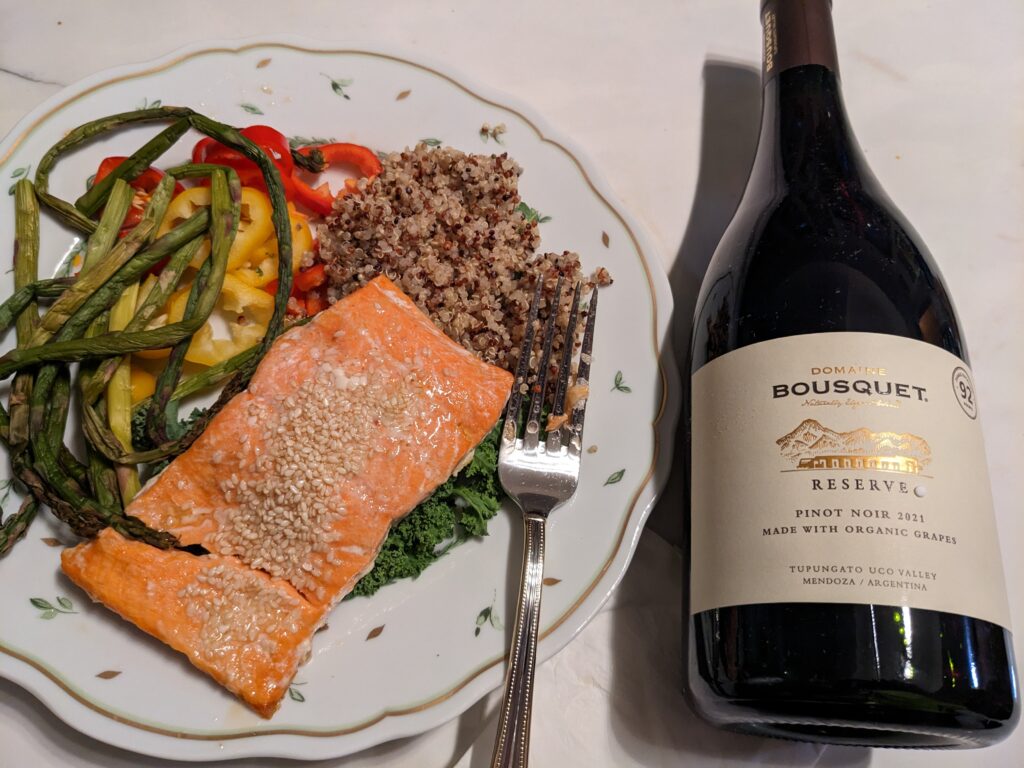
Earth Day has come and gone, but while the holiday is a reminder that we must protect and cherish our planet, a single day is obviously not enough to do so. To a very real and certain extent, EVERY day should be Earth Day!
Although we can find fault with many industries and organizations, within the world of wine, there are a number of important and impressive examples of wine regions and individual wineries who are making the investment and having an impact with their actions.
In particular, Domaine Bousquet stands as a beacon, having been organic from the “get go”. Along these lines, winery owner, Anne Bouquet refers to herself as an “Organic Revolutionary” and an “International Citizen”, both of which are well deserved and apt descriptors of her commitment to sustainability in all that they do. She is joined by lead winemaker, Rodrigo Serrano, in their quest to lead the region in organic viticulture and sustainability efforts. This “teacher’s soul” has been at the winery for the past five years, and is truly passionate about details in achieving these overarching goals.

The winery has been Certified Organic for over 25 years and has also been certified by Demeter and Biodyvin for its conversion to biodynamic viticulture. They have recently added ROC (regenerative organic certification) certification to their list of organic certifications and are 360 sustainable.
Equally telling, as of this year (2023), they are now a certified B Corp organization. “B Corp Certification is a designation that a business is meeting high standards of verified performance, accountability, and transparency on factors from employee benefits and charitable giving to supply chain practices and input materials.” (From B Lab) Some of their wines also are certified as organic Kosher, Vegan and Gluten-free.
Yet, they are not content to rest on their laurels; future endeavors seek to reduce their CO2 and H2O footprints, especially as there is less snow in the mountains due to climate change.
The winery is also expanding its focus to address other issues such as making low calorie wine, low alcohol wine and organic wine (as opposed to making wine with organic grapes, but with conventional winemaking). In this regard, the biggest challenge is to avoid using SO2, which is an antioxidant and anti-microbial, among other things. These expansions have been challenging, but rewarding as the results are finally realized in the glass.
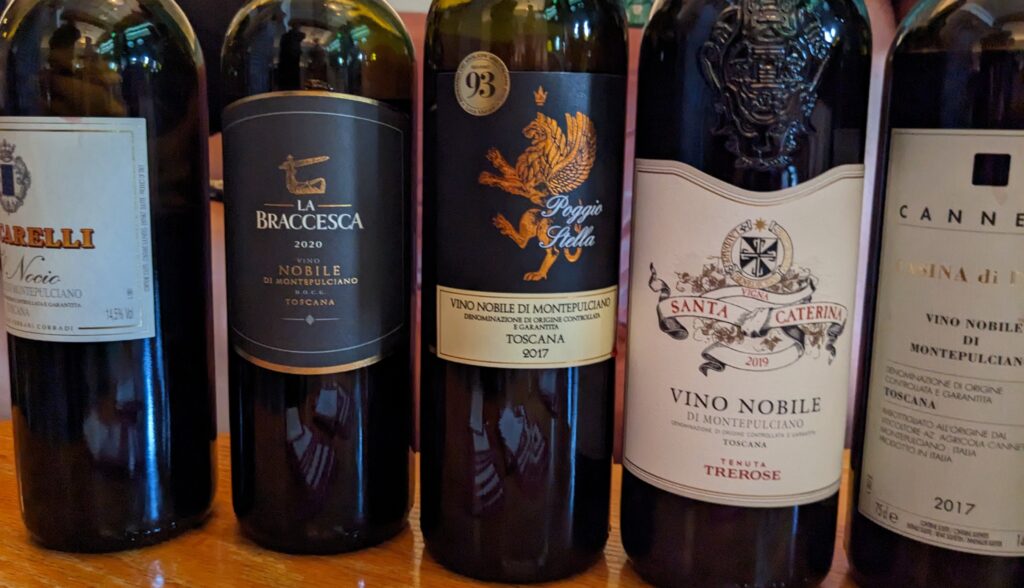
Across the pond, the Vino Nobile di Montepulciano consortium in Italy’s Tuscany region has been similarly hard at work in pushing a sustainability agenda. The result of its hard work was its award of the Equalitas standard’s sustainability certification, making it the first (and currently only) Italian wine denomination to achieve this milestone. The certification trademark extends to the entire region and is the result of a program initially implemented in the early 1990s and then built upon over the years.
To receive this prestigious certification entails “compliance with a high number of environmental requirements (like biodiversity and the measuring of carbon and water footprints) and socio-economic requirements (like verifying that the principles of freedom of association and equal opportunity are respected).”
Among these efforts, in 2006, the consortium partnered with the municipal government to collect organic waste from the vineyards for use in the production of combustion biomass to supply energy to school and government buildings. Further, the region’s Carbon Footprint project became a national model in 2015.
Of course, these commitments are not at the expense of their commitment to making high quality wine. Vino Nobile di Montepulciano is among Italy’s top designated wines having been promoted to DOCG status in 1980. Yet, it often gets overshadowed by its Tuscan neighbors: Chianti Classico and Brunello di Montalcino, whose wines also sport the Sangiovese grape.
The good news is that these wines are often well priced and provide great drinking pleasure. So you can feel good about their commitments to the Earth as you enjoy swirling, sipping and savoring them in your glass.
TASTING NOTES
TASTING NOTES: Domaine Bousquet
Domaine Bousquet LO CA Chardonnay 2022, Uco Valley, Argentina, $14.00
LO CA is a local calorie and low alcohol wine, which required numerous attempts to get it right due to ensure a wine that was stable and of the quality they desired. The resulting wine has 9% abv and 2% residual sugar. Green apple, musk and citrus greet the nose and persist on the palate with high acidity, minerality, medium body and long length.
Domaine Bousquet Virgin Red Blend 2021, Uco Valley, Argentina, $13.00
A combination of 35% Malbec, 35% Cabernet Sauvignon and 35% Cabernet Franc, this wine is USDA-certified organic and sulfite-free. A fresh and easy drinking wine, it offers up berries, plum, floral and black cherry, with medium acidity, medium body and good length.
Domaine Bousquet Reserve Pinot Noir 2021, Uco Valley, Argentina, $18.00
Made with certified organic grapes, this wine took many years to perfect since Anne is very particular about her Pinot Noir. The time and effort were worth it with its complex aromas of smoke, tart cherry, and an earthy undertone. It is medium bodied with bright acidity and long length.
Domaine Bousquet Gran Cabernet Sauvignon 2020, Uco Valley, Argentina, $20.00
A blend of 85% Cabernet Sauvignon and 15% Malbec (both of which are certified organic), this wine presents notes of vanilla, oak, black fruit and a slight leaf character on the nose. With Medium+ body, good acidity, firm ripe tannins, and black and blue fruit, it is ripe yet dry, culminating in long length.
TASTING NOTES: Vino Nobile di Montepulciano
A recent walk-around tasting event provided attendees with the opportunity to taste through a collection of Vino Nobile di Montepulciano wines as well as meet a few of the winery representatives.
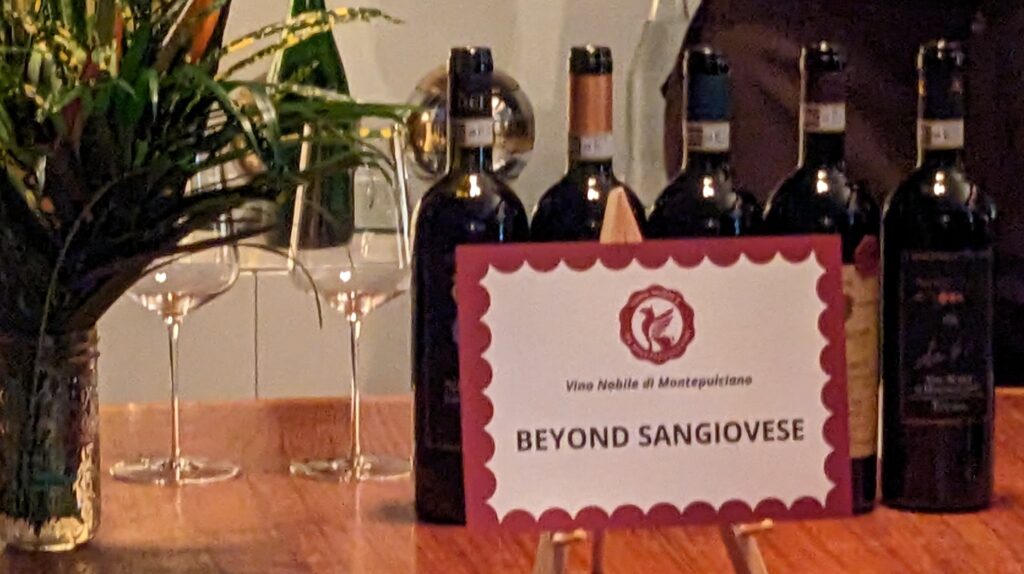
- Maria Stella Carletti, Winemaker at POLIZIANO Winery
- Luca De Ferrari, Winemaker BOSCARELLI
- Puru Manvi, owner of MANVI winery
- Susanna Ponzin, owner PODERE CASANOVA
- Lorenzo Cini from ANTICO COLLE
- Gabe Bettio from TIBERINI
- Lucia Del Fabbro from ICARIO winery
- Antonio Gaudioso export manager at VECCHIA CANTINA
Here are a few of my favorites (notes are limited):
Antico Colle Vino Nobile di Montepulciano 2020, Tuscany, Italy
95% Sangiovese, 5% Merlot
Fresh, with decidedly herbal characteristics, firmer tannins and floral notes.
Carpineto Vino Nobile di Montepulciano Riserva 2018, Tuscany, Italy
Sangiovese, Canaiolo and other authorized grapes
Meatier, with really nice depth and riper fruit.
Dei Vino Nobile di Montepulciano 2019, Tuscany, Italy
70% Sangiovese and other red grape varieties
Floral, powerful, with darker fruit, less tannic than some of the other wines.
Icario Vino Nobile di Montepulciano 2019, Tuscany, Italy
90% Sangiovese, 10% Colorino
With complex notes of smoke, oak, black fruit, it has a lighter structure and texture, with a distinct cherry and leafy palate.
La Braccesca Vino Nobile di Montepulciano 2020, Tuscany, Italy
Sangiovese, Merlot
Rich and ripe with dark cherry aromas and flavors, firm tannins.
La Ciarliana Vino Nobile di Montepulciano 2018, Tuscany, Italy
Sangiovese, Mammolo
Floral with lush, ripe red fruit, soft tannins and long length.
Poliziano Vino Nobile di Montepulciano 2020, Tuscany, Italy
90-95% Sangiovese, 5-10% other grapes, including Canaiolo and Colorino
Cherry and plum, with dusty tannins, vibrant acidity, medium body and long length.
Tenuta Trerose Vino Nobile di Montepulciano S. Caterina 2019, Tuscany, Italy
100% Sangiovese
Intense nose and palate, with ripe red fruit and long length.
Vecchia Cantina di Montepulciano Vino Nobile di Montepulciano Poggio Stella 2017, Tuscany, Italy
mostly Sangiovese
Lovely and soft, with cherries, berries and vanilla.


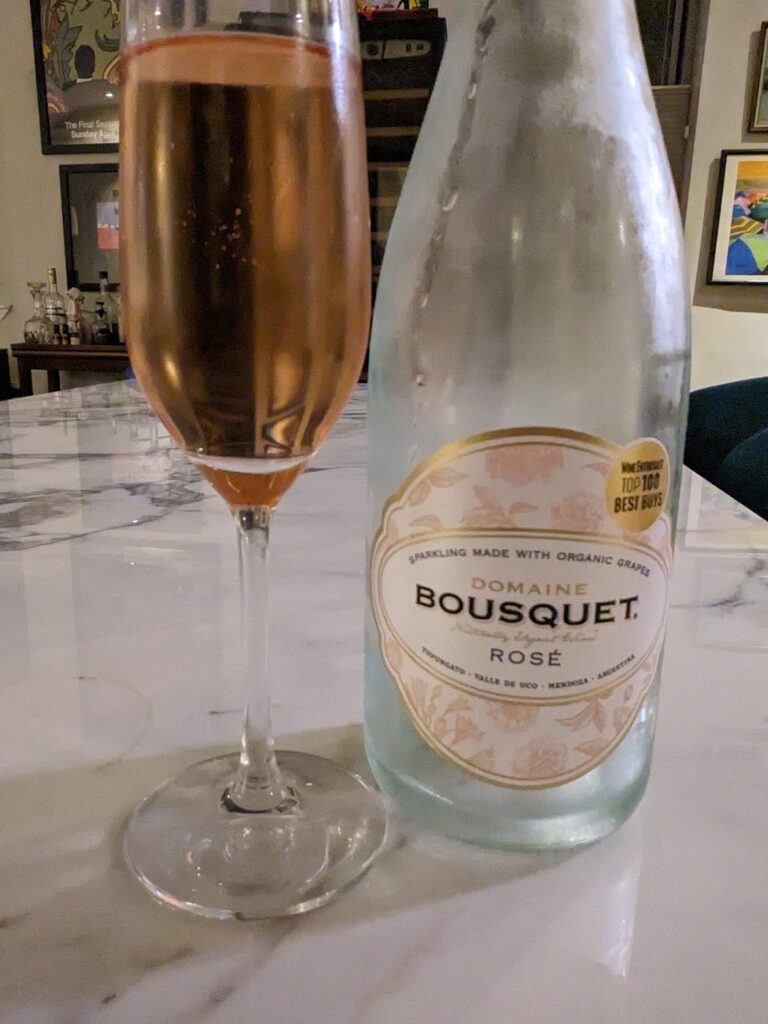
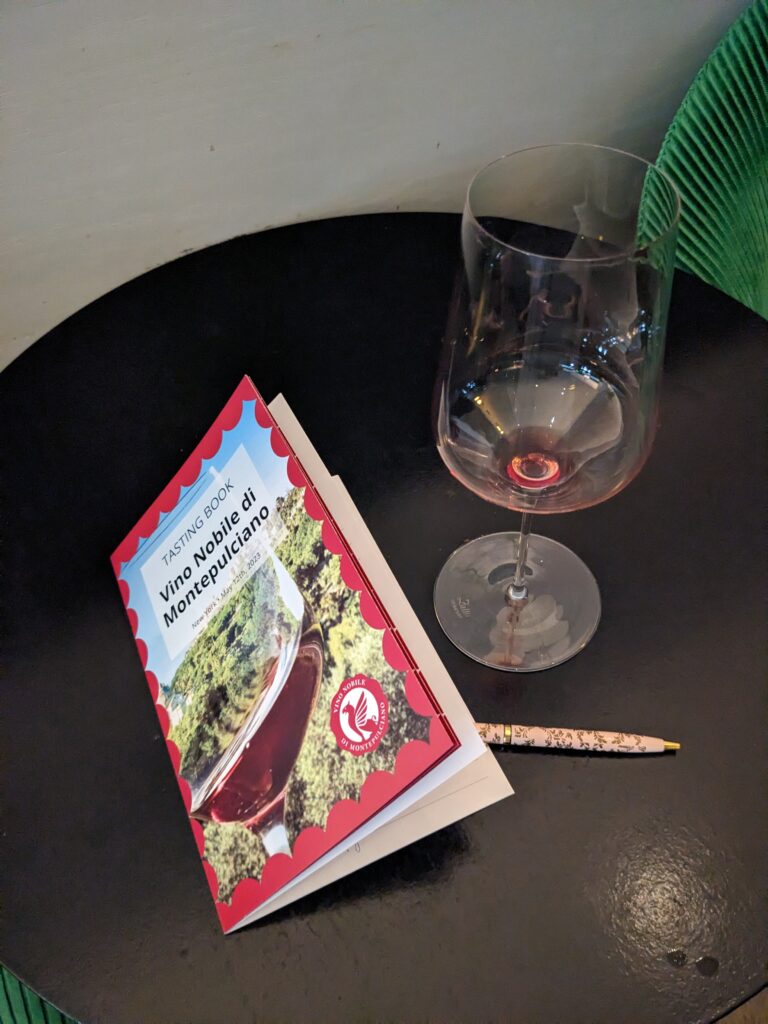

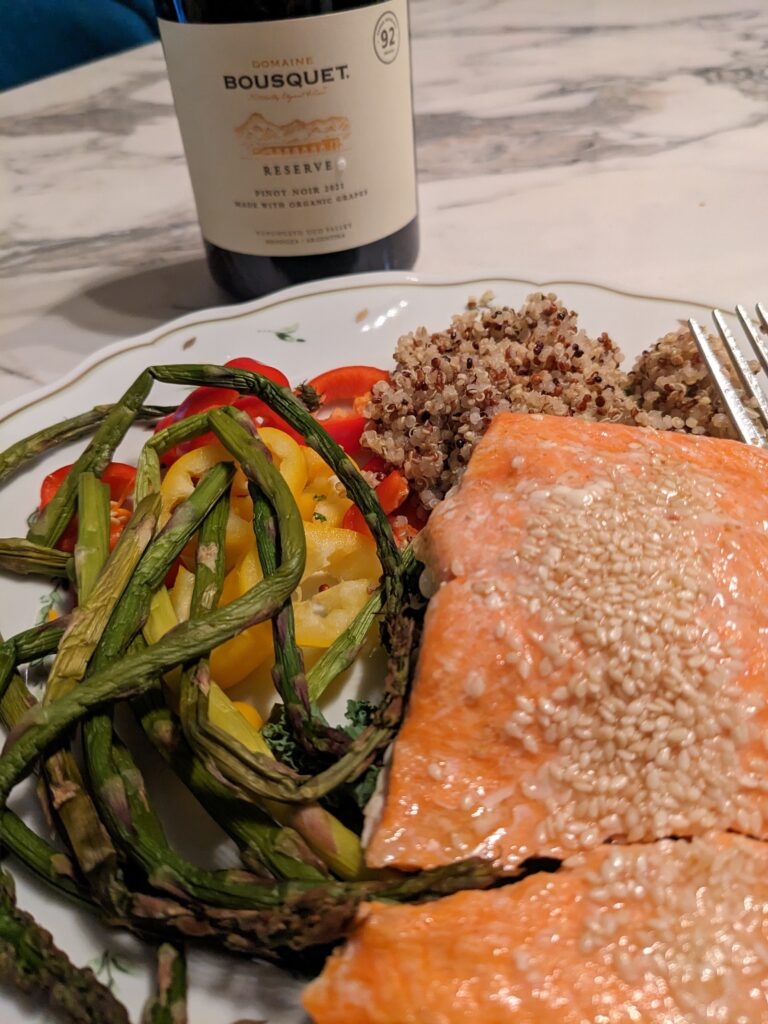
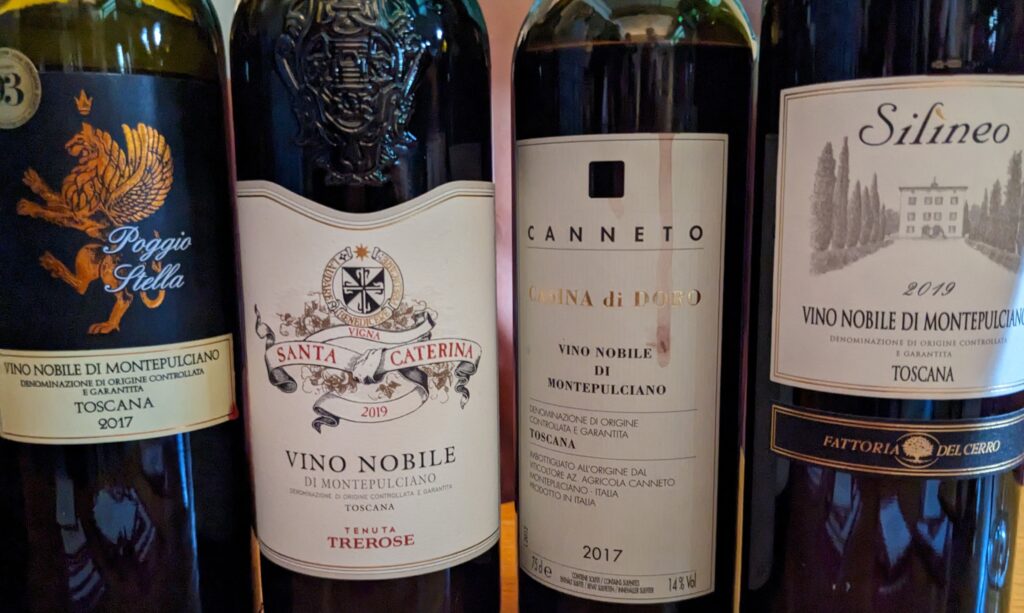
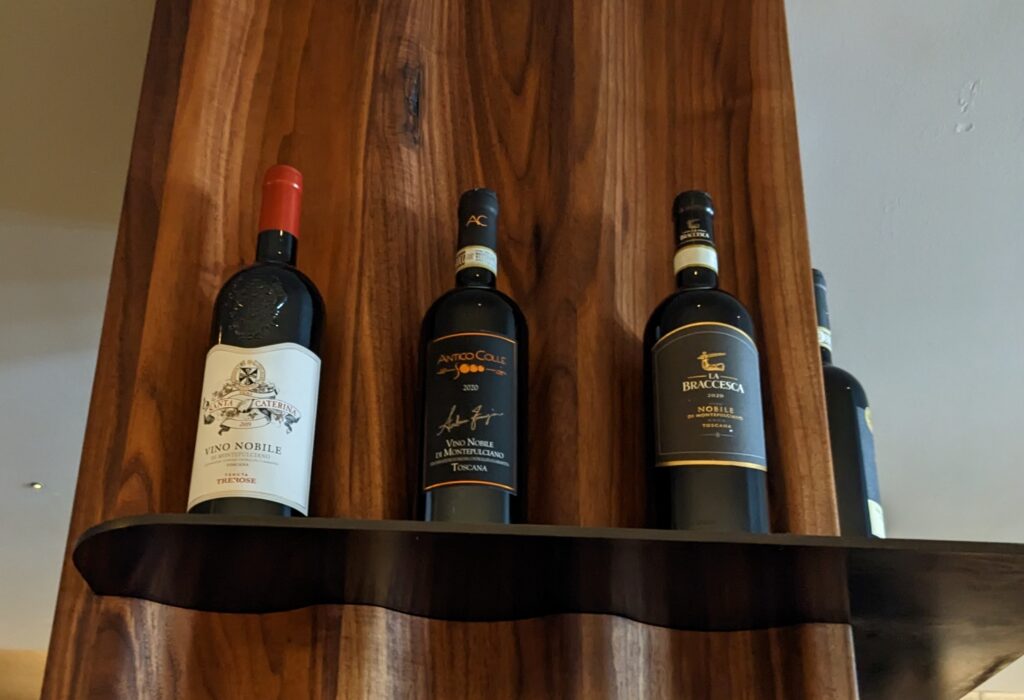
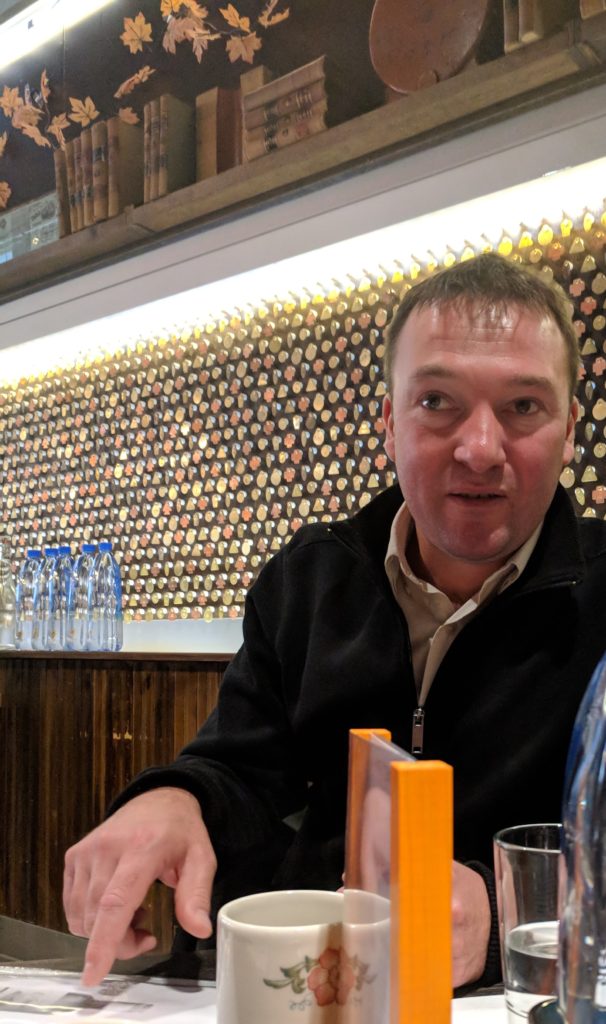 Born, raised and educated in Burgundy, Thibaut Delmotte launched his wine career doing three harvests each in Burgundy and Bordeaux before taking a year off to travel throughout South America. He booked an open ticket, headed to Buenos Aires and visited Argentina, Chile and Brazil, eventually finding himself somewhat settled in Salta teaching French at the local Alliance Française.
Born, raised and educated in Burgundy, Thibaut Delmotte launched his wine career doing three harvests each in Burgundy and Bordeaux before taking a year off to travel throughout South America. He booked an open ticket, headed to Buenos Aires and visited Argentina, Chile and Brazil, eventually finding himself somewhat settled in Salta teaching French at the local Alliance Française.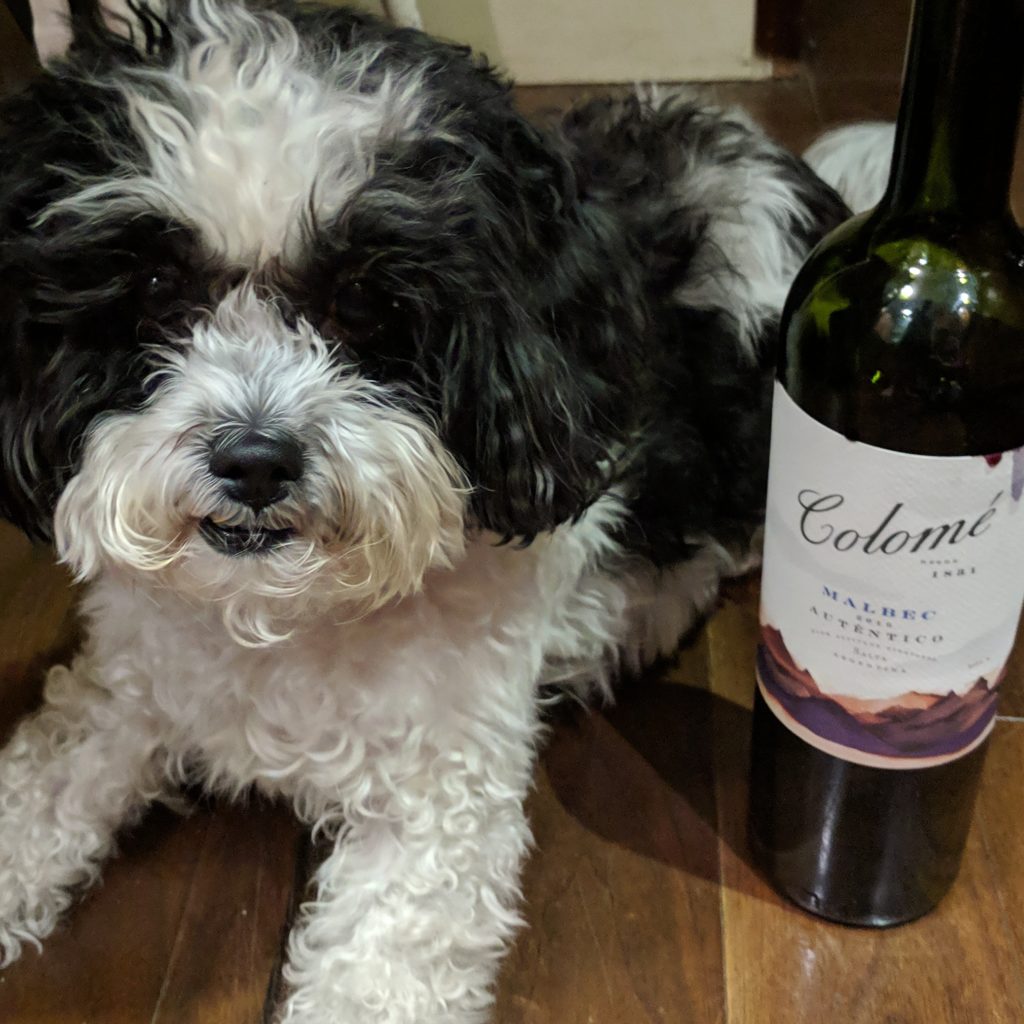 Colome Autentico 2017, Salta, Argentina, $on-premise only
Colome Autentico 2017, Salta, Argentina, $on-premise only